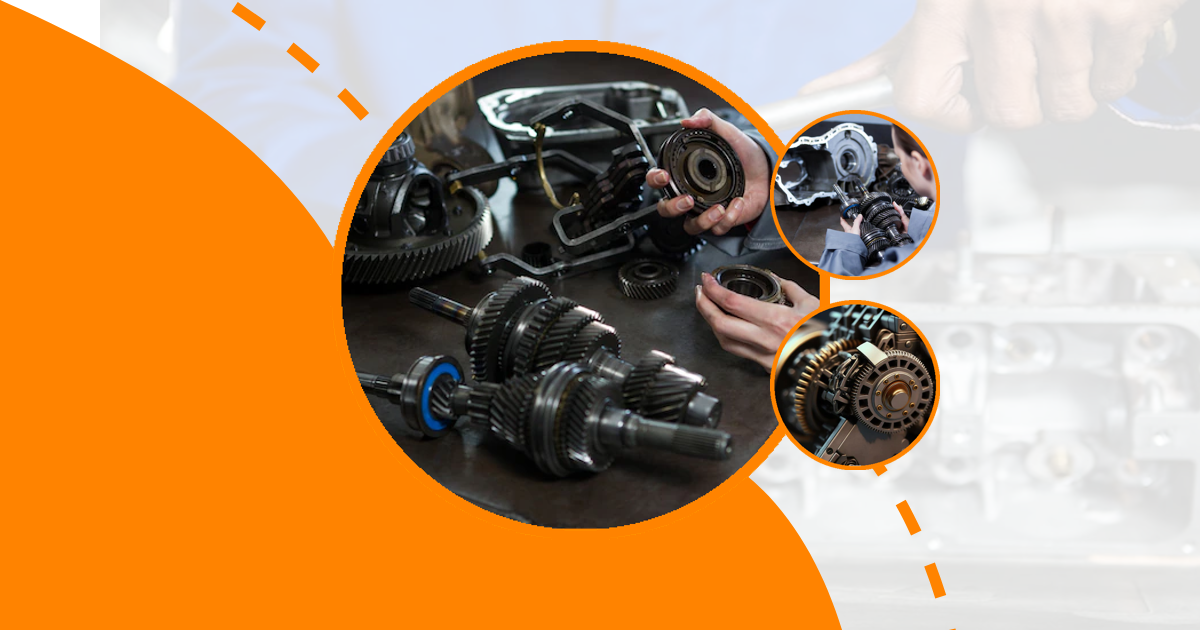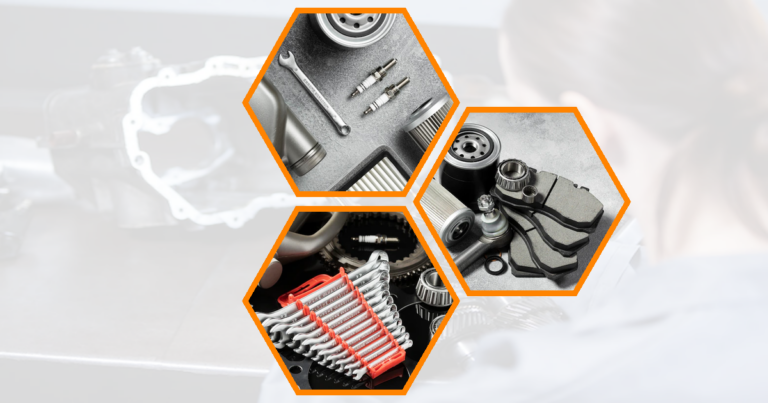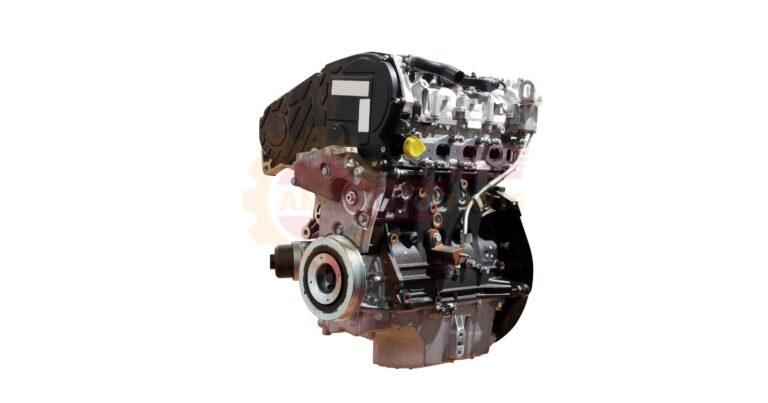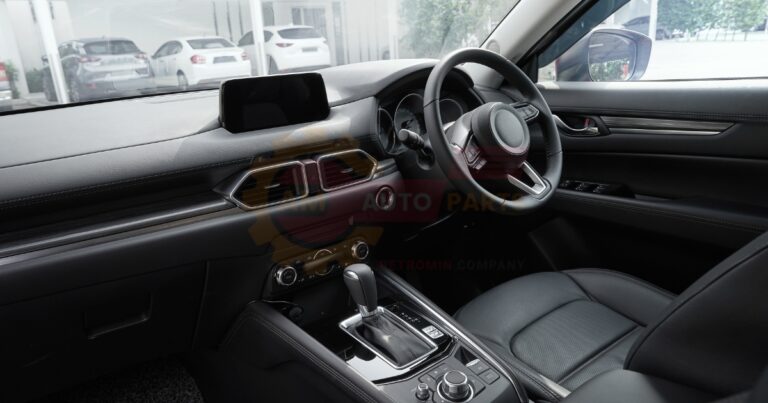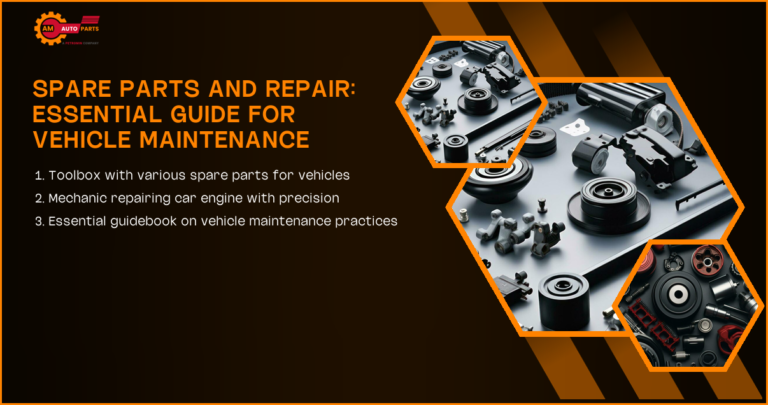Understanding the various car dashboard warning lights is crucial for every driver. These lights serve as the vehicle’s communication system, alerting you to potential issues that may require immediate attention or routine maintenance. In this comprehensive guide, we’ll explore the different types of car dashboard warning lights and symbols, their meanings, and how to respond to them effectively.
Types of Car Dashboard Warning Lights and Symbols
Critical Warning Lights
Critical warning lights indicate severe issues that need immediate attention to prevent damage to your vehicle or ensure your safety.
Check Engine Light
The check engine light is one of the most common warning lights on your car’s dashboard. It can indicate a range of issues, from a loose gas cap to a serious engine problem. Ignoring this light can lead to more significant issues and costly repairs.
- Indicates potential engine problems
- Requires diagnostic check
- Can range from minor to severe issues
Battery Alert Light
The battery alert light signals a problem with the vehicle’s charging system. This could mean a failing alternator, a dead battery, or corroded battery terminals. Addressing this issue promptly can prevent your car from stalling unexpectedly.
- Indicates charging system issues
- May require battery or alternator replacement
- Can lead to vehicle stalling
Engine Coolant Temperature Warning
This warning light indicates that the engine is overheating. Continuing to drive with this light on can cause severe engine damage. It’s essential to stop the vehicle and allow the engine to cool down before checking the coolant level.
- Signals engine overheating
- Requires immediate attention
- Check coolant levels and radiator
Oil Pressure Warning Light
The oil pressure warning light indicates low oil pressure, which can lead to engine damage if not addressed. This could be due to low oil levels, a faulty oil pump, or a clogged oil filter.
- Indicates low oil pressure
- Check oil levels immediately
- Can cause engine damage if ignored
Brake Warning Light
The brake warning light can indicate several issues, including low brake fluid, worn brake pads, or a malfunction in the braking system. It’s crucial to address this warning promptly to ensure your vehicle’s braking system is functioning correctly.
- Signals brake system issues
- Check brake fluid and pads
- Essential for vehicle safety
Safety-Related Warning Lights
Safety-related warning lights alert you to potential safety issues that could compromise your vehicle’s safety features.
Airbag Warning Light
The airbag warning light indicates a problem with the airbag system. This could mean the airbags won’t deploy in an accident, posing a significant safety risk.
- Indicates airbag system malfunction
- May prevent airbag deployment
- Requires professional inspection
Anti-lock Brake System Warning Light
The anti-lock brake system (ABS) warning light signals a problem with the ABS. This system prevents the wheels from locking up during braking, maintaining steering control.
- Signals ABS malfunction
- Affects braking performance
- Requires diagnostic check
Traction Control Warning Light
The traction control warning light indicates a problem with the vehicle’s traction control system, which helps prevent wheel spin during acceleration.
- Indicates traction control issues
- Affects vehicle stability
- May require system reset
Lane Departure Warning Light
The lane departure warning light alerts you when the vehicle unintentionally drifts out of its lane. This feature enhances safety by preventing accidents caused by lane drifting.
- Alerts to lane drifting
- Enhances driving safety
- May require sensor calibration
Maintenance and Service Indicators
Maintenance and service indicators remind you of routine maintenance tasks that keep your vehicle running smoothly.
Tire Pressure Warning Light
The tire pressure warning light indicates that one or more tires are underinflated. Proper tire pressure is crucial for safe driving and optimal fuel efficiency.
- Indicates low tire pressure
- Check and inflate tires
- Improves fuel efficiency
Low Fuel Indicator Light
The low fuel indicator light warns you when the fuel level is low. It’s essential to refuel promptly to avoid running out of gas.
- Warns of low fuel level
- Refuel promptly
- Prevents vehicle stalling
Washer Fluid Indicator Light
The washer fluid indicator light signals that the windshield washer fluid is low. Keeping this fluid topped up ensures clear visibility during adverse weather conditions.
- Indicates low washer fluid
- Refill for clear visibility
- Essential for safe driving
Oil Change Reminder
The oil change reminder alerts you when it’s time for an oil change. Regular oil changes are vital for maintaining engine health and performance.
- Reminds of oil change schedule
- Maintains engine health
- Enhances vehicle performance
Common Dashboard Warning Lights
Engine and Powertrain Warnings
Engine and powertrain warnings alert you to issues that can affect your vehicle’s performance and efficiency.
Transmission Temperature Warning Light
The transmission temperature warning light indicates that the transmission is overheating. This can lead to transmission failure if not addressed promptly.
- Signals transmission overheating
- Requires immediate attention
- Can cause transmission damage
Powertrain Fault Indicator
The powertrain fault indicator signals a problem with the vehicle’s powertrain, which includes the engine, transmission, and drivetrain.
- Indicates powertrain issues
- Affects vehicle performance
- Requires diagnostic check
Electronic Stability Program (ESP) Warning Light
The ESP warning light indicates a problem with the electronic stability program, which helps maintain vehicle stability during cornering.
- Signals ESP malfunction
- Affects vehicle stability
- May require system reset
Vehicle System Alerts
Vehicle system alerts notify you of issues with various vehicle systems that may require attention.
Power Steering Warning Light
The power steering warning light indicates a problem with the power steering system, which can affect steering control.
- Indicates power steering issues
- Affects steering control
- May require fluid check or repair
Master Warning Light
The master warning light is a general warning that indicates a problem with one or more vehicle systems. It’s essential to check the vehicle’s information display for more details.
- General warning for vehicle issues
- Check information display
- Requires further investigation
Service Vehicle Soon Warning Light
The service vehicle soon warning light alerts you to a non-critical issue that requires attention. Scheduling a service appointment can prevent more significant problems.
- Indicates non-critical issues
- Schedule service appointment
- Prevents major problems
Safety System Indicators
Safety system indicators alert you to issues with the vehicle’s safety features.
Side Air Bag Off Warning Light
The side air bag off warning light indicates that the side airbags are deactivated. This can pose a safety risk in the event of a side collision.
- Indicates deactivated side airbags
- Poses safety risk
- Requires professional inspection
Seat Belt Reminder Light
The seat belt reminder light alerts you when the seat belts are not fastened. Wearing seat belts is crucial for safety in the event of an accident.
- Reminds to fasten seat belts
- Enhances passenger safety
- Essential for legal compliance
Traction Control Off Warning Light
The traction control off warning light indicates that the traction control system is deactivated. This can affect vehicle stability during acceleration.
- Indicates deactivated traction control
- Affects vehicle stability
- May require system reset
Advanced Dashboard Symbols and Their Meanings
Lighting Symbols
Lighting symbols indicate the status of various lighting systems in your vehicle.
Low Beam Indicator Light
The low beam indicator light signals that the low beam headlights are on. This is essential for safe driving at night or in low-visibility conditions.
- Indicates low beam headlights on
- Essential for night driving
- Enhances road visibility
High Beam Light Indicator
The high beam light indicator signals that the high beam headlights are on. High beams provide enhanced visibility on dark roads but should be used cautiously to avoid blinding other drivers.
- Indicates high beam headlights on
- Provides enhanced visibility
- Use cautiously to avoid glare
Front and Rear Fog Lights Indicators
The fog lights indicators signal that the front or rear fog lights are on. Fog lights improve visibility in foggy or misty conditions.
- Indicates fog lights on
- Enhances visibility in fog
- Essential for safe driving
Comfort and Convenience Symbols
Comfort and convenience symbols indicate the status of various comfort features in your vehicle.
Rear Window Defrost Indicator
The rear window defrost indicator signals that the rear window defroster is on. This feature clears frost or fog from the rear window for improved visibility.
- Indicates rear window defroster on
- Clears frost or fog
- Enhances rear visibility
Recirculated Cabin Air Symbol
The recirculated cabin air symbol indicates that the air inside the vehicle is being recirculated. This feature helps maintain cabin temperature and air quality.
- Indicates recirculated air mode
- Maintains cabin temperature
- Improves air quality
Auto Windscreen Wiping Indicator
The auto windscreen wiping indicator signals that the automatic wipers are activated. This feature adjusts wiper speed based on rain intensity for optimal visibility.
- Indicates automatic wipers on
- Adjusts wiper speed automatically
- Enhances visibility in rain
Driver Assistance Features
Driver assistance features enhance driving safety and convenience.
Parking Sensor Light
The parking sensor light indicates that the parking sensors are active. These sensors help detect obstacles when parking, preventing collisions.
- Indicates active parking sensors
- Detects obstacles when parking
- Prevents parking collisions
Lane Assist Warning Light
The lane assist warning light alerts you when the vehicle drifts out of its lane. This feature helps prevent accidents caused by unintentional lane changes.
- Alerts to lane drifting
- Enhances driving safety
- May require sensor calibration
Hill Descent Control Indicator
The hill descent control indicator signals that the hill descent control system is active. This feature helps maintain a steady speed when descending steep hills.
- Indicates active hill descent control
- Maintains speed on steep hills
- Enhances driving safety
Importance of Monitoring Dashboard Warning Lights
Monitoring dashboard warning lights is crucial for maintaining your vehicle’s health and ensuring safety.
Preventing Major Vehicle Damage
Ignoring warning lights can lead to severe vehicle damage and costly repairs. Addressing issues promptly can prevent further damage and extend your vehicle’s lifespan.
- Prevents severe vehicle damage
- Reduces repair costs
- Extends vehicle lifespan
Ensuring Driver and Passenger Safety
Dashboard warning lights alert you to potential safety issues that could compromise your safety. Addressing these warnings ensures that your vehicle’s safety features are functioning correctly.
- Ensures vehicle safety features work
- Protects driver and passengers
- Reduces accident risk
Maintaining Vehicle Performance and Efficiency
Regularly monitoring and addressing warning lights helps maintain your vehicle’s performance and fuel efficiency. This can lead to cost savings and a smoother driving experience.
- Maintains vehicle performance
- Improves fuel efficiency
- Enhances driving experience
How to Respond to Different Dashboard Warning Lights
Knowing how to respond to different dashboard warning lights can prevent further issues and ensure your safety.
Immediate Action Required Lights
Some warning lights require immediate action to prevent severe damage or ensure safety. These include the check engine light, oil pressure warning light, and brake warning light.
- Requires immediate attention
- Prevents severe damage
- Ensures safety
Schedule Service Soon Indicators
Some warning lights indicate non-critical issues that require attention soon. Scheduling a service appointment can prevent more significant problems.
- Indicates non-critical issues
- Schedule service appointment
- Prevents major problems
Informational Lights and Their Significance
Informational lights provide useful information about your vehicle’s status. These include the low fuel indicator light and washer fluid indicator light.
- Provides vehicle status information
- Enhances driving convenience
- Requires routine checks
Diesel-Powered Vehicle Specific Warning Lights
Diesel-powered vehicles have specific warning lights that indicate issues unique to diesel engines.
Glow Plug Indicator
The glow plug indicator signals that the glow plugs are warming up. This is essential for starting a diesel engine in cold weather.
- Indicates glow plug warming
- Essential for cold starts
- Enhances engine performance
Diesel Particulate Filter Warning
The diesel particulate filter warning indicates that the filter is clogged. This can affect engine performance and emissions.
- Indicates clogged filter
- Affects engine performance
- Requires filter cleaning
Diesel Exhaust Fluid (DEF) Level Warning
The DEF level warning indicates that the diesel exhaust fluid level is low. This fluid is essential for reducing emissions in diesel engines.
- Indicates low DEF level
- Essential for emissions reduction
- Requires DEF refill
The Evolution of Dashboard Warning Systems
Dashboard warning systems have evolved significantly over the years, enhancing vehicle safety and convenience.
From Analog to Digital Displays
Dashboard displays have transitioned from analog gauges to digital displays, providing more detailed information and alerts.
- Transition from analog to digital
- Provides detailed information
- Enhances driver awareness
Integration with Onboard Diagnostics
Modern vehicles integrate dashboard warning systems with onboard diagnostics, allowing for more accurate and comprehensive alerts.
- Integration with diagnostics
- Provides accurate alerts
- Enhances vehicle maintenance
Future Trends in Vehicle Warning Systems
Future trends in vehicle warning systems include advanced driver assistance features and integration with smart technology for enhanced safety and convenience.
- Advanced driver assistance features
- Integration with smart technology
- Enhances safety and convenience
Common Misconceptions About Dashboard Warning Lights
There are several misconceptions about dashboard warning lights that can lead to improper vehicle maintenance.
Ignoring Warning Lights to Save Money
Some drivers ignore warning lights to avoid repair costs. However, this can lead to more significant issues and higher repair bills in the long run.
- Ignoring lights increases repair costs
- Leads to significant vehicle issues
- Prevents proper maintenance
Assuming All Red Lights Indicate Severe Issues
Not all red warning lights indicate severe issues. Some may signal non-critical problems that require attention soon.
- Not all red lights are severe
- Some indicate non-critical issues
- Requires proper diagnosis
Relying Solely on Warning Lights for Maintenance
Relying solely on warning lights for maintenance can lead to neglecting routine checks and services. Regular maintenance is essential for vehicle health. Transmission type explanation Internal combustion basics Engines that burn fuel inside them to make power and move vehicles like cars and trucks
- Warning lights are not sole indicators
- Requires routine checks and services
- Ensures comprehensive maintenance
Tips for Maintaining a Healthy Vehicle and Preventing Warning Lights
Regular maintenance and proactive checks can prevent warning lights and ensure your vehicle’s health.
Regular Maintenance Schedules
Following a regular maintenance schedule ensures that your vehicle is in optimal condition and prevents potential issues.
- Ensures optimal vehicle condition
- Prevents potential issues
- Enhances vehicle lifespan
Proactive Vehicle Checks
Conducting proactive vehicle checks can identify issues before they become significant problems, preventing warning lights.
- Identifies issues early
- Prevents warning lights
- Reduces repair costs
Using OBD-II Scanners for Early Detection
Using OBD-II scanners can detect issues early, allowing for prompt repairs and preventing warning lights.
- Detects issues early
- Allows prompt repairs
- Prevents warning lights
Frequently Asked Questions About Dashboard Warning Lights
What should I do if my check engine light comes on?
If your check engine light comes on, it’s essential to have your vehicle diagnosed by a professional. This light can indicate a range of issues, from minor to severe, and addressing it promptly can prevent further damage.
How serious is it when the battery alert light illuminates?
The battery alert light indicates a problem with the vehicle’s charging system. It’s crucial to address this issue promptly, as it can lead to vehicle stalling and other electrical problems.
Can I continue driving if the tire pressure warning light is on?
While you can continue driving with the tire pressure warning light on, it’s essential to check and inflate your tires as soon as possible. Proper tire pressure is crucial for safe driving and optimal fuel efficiency.
